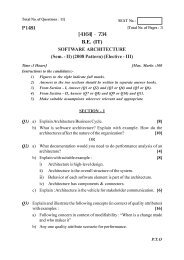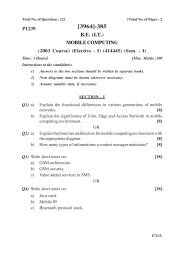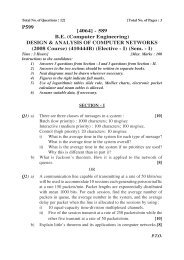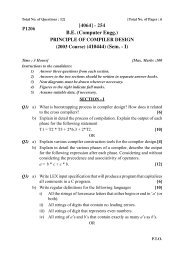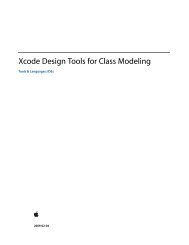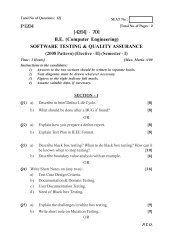Cloud Computing and SOA Convergence in Your Enterprise: A Step ...
Cloud Computing and SOA Convergence in Your Enterprise: A Step ...
Cloud Computing and SOA Convergence in Your Enterprise: A Step ...
You also want an ePaper? Increase the reach of your titles
YUMPU automatically turns print PDFs into web optimized ePapers that Google loves.
206 Chapter 11 Mak<strong>in</strong>g the Move to <strong>Cloud</strong> <strong>Comput<strong>in</strong>g</strong><br />
Database <strong>and</strong> database-as-a-service is the storage <strong>and</strong> retrieval of data<br />
us<strong>in</strong>g a platform-as-a-service, database-as-a-service, or <strong>in</strong>frastructure-as-aservice.<br />
Th<strong>in</strong>gs you need to consider here <strong>in</strong>clude the ability for the clouddelivered<br />
database to support the features <strong>and</strong> functions you may require for<br />
your architecture, <strong>in</strong>clud<strong>in</strong>g the use of stored procedures <strong>and</strong> triggers, the<br />
function of the API, adherence to st<strong>and</strong>ards, <strong>and</strong> performance.<br />
With<strong>in</strong> the case of <strong>in</strong>frastructure-as-a-service, cloud comput<strong>in</strong>g providers<br />
typically allow you to leverage name br<strong>and</strong> databases, such as Oracle or<br />
MySQL. However, the database-as-a-service providers typically use a homegrown<br />
rather than br<strong>and</strong>-name database, <strong>and</strong> they tend to be more proprietary<br />
<strong>in</strong> nature.<br />
Performance comes <strong>in</strong>to play here as well. Most on-premise <strong>and</strong> traditional<br />
applications are data I/O bound, so you will f<strong>in</strong>d that similar performance<br />
problems may exist here. Consider the overhead of I/O on a multitenant<br />
platform <strong>and</strong> the latency that can occur when you send large amounts of<br />
data to <strong>and</strong> from your enterprise to the cloud comput<strong>in</strong>g provider <strong>and</strong> back<br />
aga<strong>in</strong> over the Internet. This could also make a case for plac<strong>in</strong>g the database<br />
closer to the processes <strong>and</strong> services that leverage that database, which is a<br />
core tenet of architecture when you consider performance <strong>and</strong> the reliability<br />
of databases.<br />
Always Check on the Frequency of Outages<br />
For all of this to work, reliability is a core requirement of your cloud comput<strong>in</strong>g<br />
provider. As you select cloud comput<strong>in</strong>g providers for your to-be architecture,<br />
make sure to look at the reliability of each provider. Typically, this means<br />
look<strong>in</strong>g at the number of outages they experienced over a 2-year period. Also,<br />
look at how they support failover <strong>and</strong> other recovery operations when events<br />
such as network, hardware, <strong>and</strong> software failures occur.<br />
While many of these outages make the IT press, the lesser known cloud<br />
comput<strong>in</strong>g providers often go unnoticed when outages occur. Make sure to<br />
call a few references—both those the vendor provides <strong>and</strong> perhaps a few they<br />
do not—<strong>and</strong> ask about the frequency of outages. Also, if the cloud comput<strong>in</strong>g<br />
provider is good, it should have a record of outages, why they occurred, <strong>and</strong><br />
what they are do<strong>in</strong>g to prevent such outages <strong>in</strong> the future.



